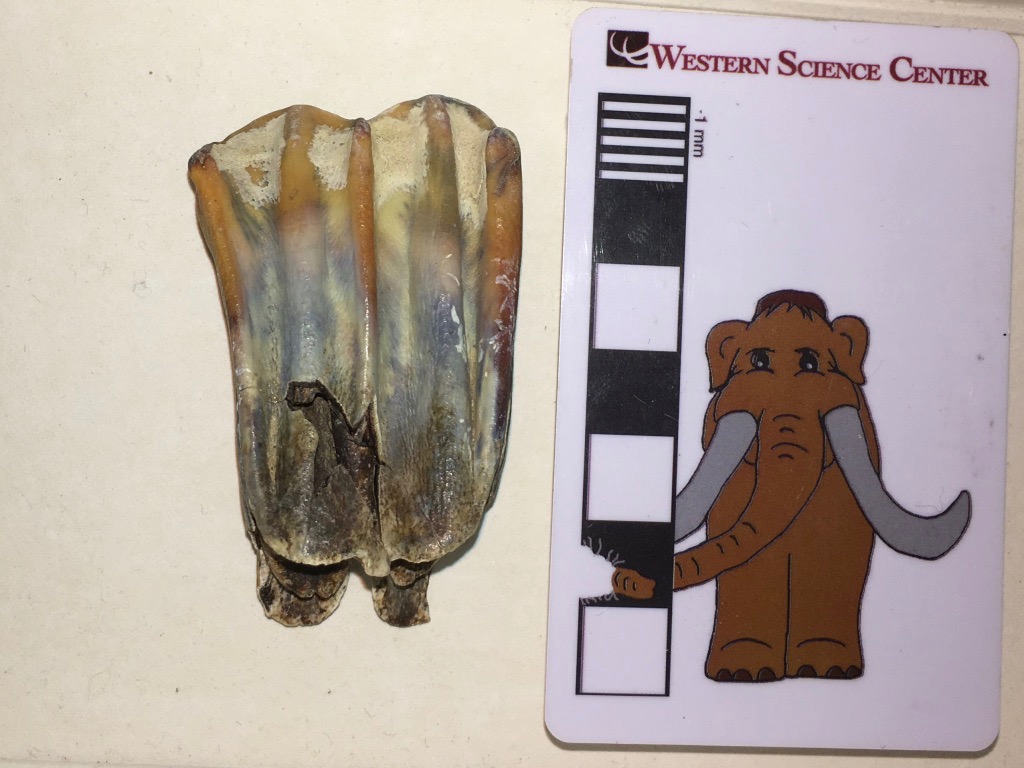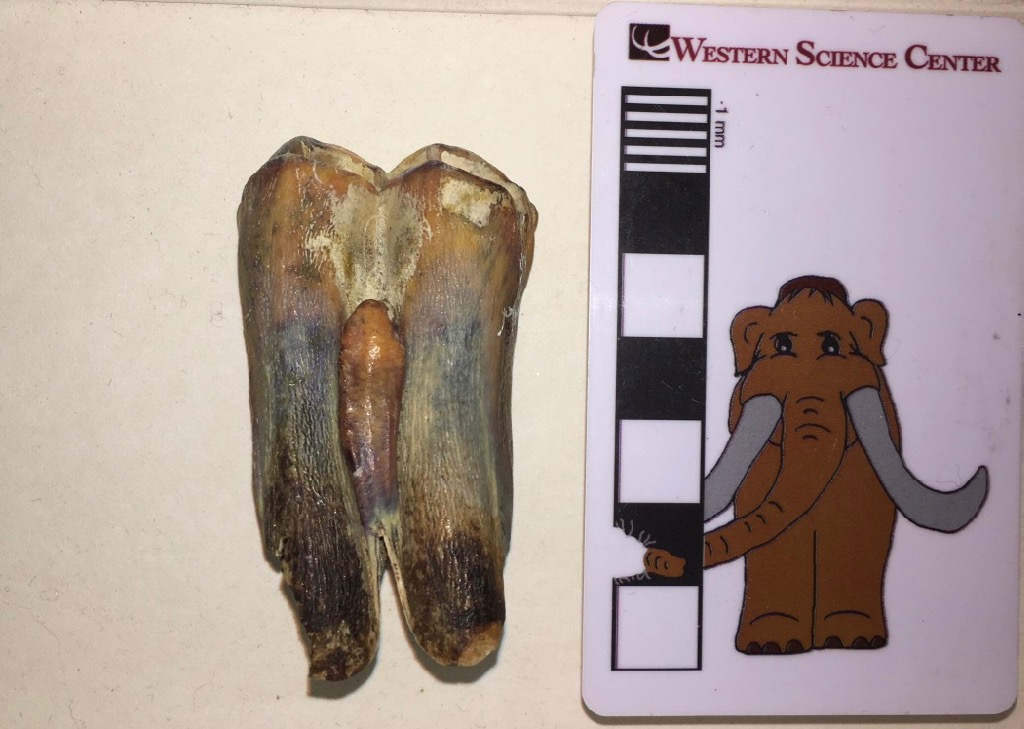 At Diamond Valley Lake, five genera account for 93% of the preserved large animals: Bison, Equus, Camelops, Mammoth, and Paramylodon. Of these five, the most abundant are Bison.The tooth shown above is an upper left 1st molar from a bison. Unfortunately, I photographed it upside down, so even though it's an upper tooth in the image the edge at the top is the chewing surface and the roots are at the bottom. This is the labial view, the side of the tooth closest to the lips.Below is the lingual view, showing the side of the tooth closest to the tongue:
At Diamond Valley Lake, five genera account for 93% of the preserved large animals: Bison, Equus, Camelops, Mammoth, and Paramylodon. Of these five, the most abundant are Bison.The tooth shown above is an upper left 1st molar from a bison. Unfortunately, I photographed it upside down, so even though it's an upper tooth in the image the edge at the top is the chewing surface and the roots are at the bottom. This is the labial view, the side of the tooth closest to the lips.Below is the lingual view, showing the side of the tooth closest to the tongue: Again, the occlusal edge is at the top, roots at the bottom. The reddish-brown protuberance in the middle of the tooth is a column called the style (stylid on the lower teeth). The style is almost always present in the upper and lower molars of Bison, but it's very rare in the closely related cattle genus Bos. So it's a very convenient identification feature (if not necessarily 100% reliable) for distinguishing between Bos and Bison.In occlusal view (below), the style can be seen end-on on the lingual side of the tooth (on the left in this image):
Again, the occlusal edge is at the top, roots at the bottom. The reddish-brown protuberance in the middle of the tooth is a column called the style (stylid on the lower teeth). The style is almost always present in the upper and lower molars of Bison, but it's very rare in the closely related cattle genus Bos. So it's a very convenient identification feature (if not necessarily 100% reliable) for distinguishing between Bos and Bison.In occlusal view (below), the style can be seen end-on on the lingual side of the tooth (on the left in this image): This particular tooth only has very light wear. In a heavily-worn molar, the tooth eventually wears away so much that the occlusal surface of the tooth is level with the tip of the style. The style then begins to wear as well, and becomes visible on the occlusal surface as an isolated ring of enamel. Because the style is not the same shape throughout its length, as wear continues the ring gradually becomes an oval, and then a loop of enamel connected to the rest of the tooth. So the style shape on the occlusal surface give a rapid indication of how worn the tooth is, even is it's still embedded in the socket.This tooth was collected from the West Dam of Diamond Valley Lake. Bison latifrons has not been identified from the West Dam, so this is most likely Bison antiquus. Western Science Center also has teaching kits based on interpretation of bison tooth wear in cast specimens available for purchase.
This particular tooth only has very light wear. In a heavily-worn molar, the tooth eventually wears away so much that the occlusal surface of the tooth is level with the tip of the style. The style then begins to wear as well, and becomes visible on the occlusal surface as an isolated ring of enamel. Because the style is not the same shape throughout its length, as wear continues the ring gradually becomes an oval, and then a loop of enamel connected to the rest of the tooth. So the style shape on the occlusal surface give a rapid indication of how worn the tooth is, even is it's still embedded in the socket.This tooth was collected from the West Dam of Diamond Valley Lake. Bison latifrons has not been identified from the West Dam, so this is most likely Bison antiquus. Western Science Center also has teaching kits based on interpretation of bison tooth wear in cast specimens available for purchase.
